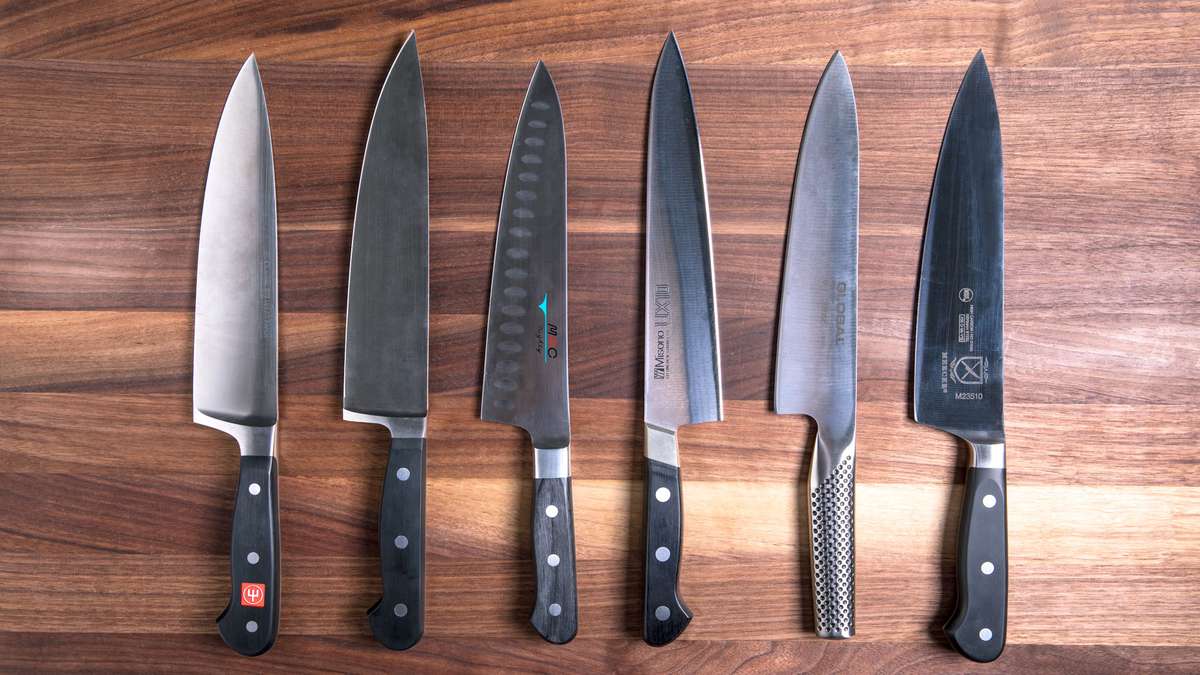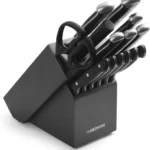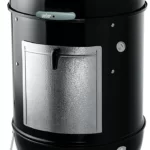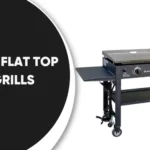The best chef knife under $100 is essential for every home cook. The kitchen knife is also called the workhorse of the kitchen because you can use it for everything—slicing meat, chopping vegetables, blending herbs—you name it.
A high-end chef’s knife can set you back a small fortune, however, if you do some research, you may be able to find several top-quality options from well-known brands for less than $100.
Find out the top three best chef’s knives for your money if you’re in the market for a new knife and looking for the best deal.
I examine some of the best chef’s knives under $100 in this article, covering them from the materials, design, functionality, sharpness, durability, price, warranty, and much more.
After reading this review, you’ll know what makes each of these knives unique and how they stack up to each other. By the end, you’ll know everything you need to decide which one is right for you.
Typically, the chef’s knives in this guide cost below $100. However, prices are subject to change. To check current prices, refer to the information under the “Price” tab in the Comparison Chart.
Best Chef Knife Under $100: Top 3 Picks

- Programmable – plan 24 hours ahead.
- Small and easy to store
- Pause function
- Good price

- Modern, sexy look with a dark and seductive wooden handle.
- Much more affordable, making you think about buying a set.
- A well-balanced, aggressive knife.
Best Chef Knife Under $100: Reviews
Wusthof Classic 6 ” Chef Knife

We were surprised that we could include one of these coveted German classic knife makers on our list for just under $ 100. But we had to make a special exception and let them in with a 6-inch blade. It’s a bit short for a normal chef’s knife, but it would appeal to people with smaller hands.
Come on, it’s still a lot !
So what is the problem? Start by adopting this classic look. The full tang (blade extension across the handle), which is held in place by three rivets on the synthetic composite handle, speaks of high-quality construction. The classic flat handle with a rounded stock is easy to grip and prevents your hand from slipping back.
A thickened pad acts as a finger guard to prevent the hand from moving forward over the blade and also provides a convenient anchor for a grip. It is made from one-piece forged chrome-moly-vanadium steel, which at 58+ is Rockwell annealed. This means that the blade remains sharper and rust-free for longer.
Is this to live up to the name Wusthof ?
The blade stayed sharp longer in our sharpness tests. Even after 20 minutes of vegetables and chicken bone at a table cutting wood, cut clean and tomatoes papers was not a problem for this cutting knife. Acute!
At 6.4 ounces, this is one of the lightest knives we’ve ever compared. However, this is difficult because of the size of the blade. It’s a bit heavy, but it gives more power to a short knife, and we see that as an advantage.
ADVANTAGE
- Great sharpness and durability.
- Excellent feeling.
- Manufactured by a trusted manufacturer with 200 years of experience.
DISADVANTAGE
- The most expensive knife we have ever tried.
- 6 inches will not be enough for most chefs.
Dalstrong Gladiator Series 8 ”Chef Knives

Dalstrong is an American company that manufactures its knives in China. You’re selling yourself like a new kid on the block, I think that means cutting the block. Let’s see how they stack up against traditional old world manufacturers.
The first thing you notice about this knife is that the design is bold and fresh. In direct contrast to the old German blade makers, we see a new shape with a forward sloping pad and a slightly curved handle. The handle is natural and tapers forward. The handle Pakkawood not only looks good but also provides a reliable grip, though it is slippery.
Material
This is another full tang knife that is riveted three times to the wooden handle. An inclined stainless-steel piston mimics the slope of the padding. This makes the entire presentation look clean, fast, and forward-thinking. We found that the knife weighed a bit on the blade, but when held with the pad with a tight handle, it made aggressive but controlled cuts.
Sustainability
Hardened to 56+ Rockwell, this is a slightly smoother knife than the Wusthof, but the difference would be barely noticeable. In the same sharpness test, this knife held up but broke thin tomato slices with ease. So you will find that you are going to sharpen this knife a bit more, but we find it comfortable and sturdy, definitely a winner when it comes to cutting meat.
ADVANTAGE
- Modern and sexy look with a seductive dark wood handle.
- Much cheaper so you have to think about buying a set.
- A balanced and aggressive knife.
DISADVANTAGE
- A little softer and less durable. It is still very hot.
- Heavy and designed for great chefs.
Global 8 “G-2 Chef’s Knif

Look at this thing. This is not your grandfather’s knife (unless your grandfather is the manufacturer of global knives, Komin Yamada )! Everything about this knife screams differently. Different construction, different shapes, and different feel.
This Japanese-made knife comes from the factory sharpened at a very sharp angle. It is sharp and not beveled like all other knives. Simply put, it has a long, thin, and sharp cutting angle that extends into the inside of the blade. In our tests, it stayed sharp for the second longest, gliding through thin slices as one would expect from a samurai sword.
The shape and handle are unusual …
First of all, this shape is a much straighter blade compared to the deeper, curved blades of the German style. The shape is of Japanese origin and focuses much more on the precise cutting of soft materials. However, we have found it more difficult to keep cuts as straight on thick, tough vegetables such as carrots.
The unusual handle is a hollow stainless steel handle with knobs that are perfectly fixed to the blade. It thickens towards the blade so that the hand does not slide forward. This is also a good thing because there is no cushion in front of this fierce sword! The loose sand in the hollow handle moves back and forth through your cuts like a shock absorber. It’s strange, but it was actually the best balanced sword of all!
ADVANTAGE
- Crisp and clean appearance!
- Better balance for good control.
- Ideal for cutting.
DISADVANTAGE
- Price e lev mail but definitely a great addition to the kitchen.
- The handle may be small for many cooks with larger hands. There is not much space on the cutting board, so be careful with your fingers while cutting.
Classic Chef’s knife J.A. 8 ” Henckels International

Here’s another great knife from another German knife maker. Although JA Henckels has gone international, this Spanish made knife is forged from German grade steel and built to last.
Let’s see how it adds up …
In all respects, this is a classic European chef’s knife. At first glance, there seems to be practically no difference between the form of the Henckels and that of the Wusthof. But take a closer look.
The padding of the Henckels is straight upright, while the Wusthof is inclined forward. This brings the balance of this knife back to the handle. At a whopping 10.4 ounces, this is the heaviest knife on our list. He’s a workaholic made to share and hack anything that comes his way!
The full tang and riveted polymer grip provide a no-frills, no-frills stock that could double for a header. But with such a stable toe guard on the padding, there is no risk of slipping and injury. The blade leaves plenty of room on the cutting board.
Durability?
This knife held up well, it actually kept a very sharp edge and snapped everything we got in the way. However, the fine, controlled cut was not so much what this blade was designed for. This and the global G-2 could almost come from different planets!
ADVANTAGE
- Sharp and durable. The hot forged stainless steel in a Rockwell 56+ should have a longer edge than most.
- Heavy, brutal, and made for big, strong hands.
- Excellent price for a knife of this quality.
DISADVANTAGE
- Heavy, brutal, and made for big, strong hands! Little cooks will find that there are too many knives.
- Designed for mincing and cutting bone meat, this knife is less agile and versatile than others.
Victorinox Fibrox Pro 8 ” chef knives

A Swiss chef’s knife? Sorry, no corkscrew. However, this Swiss brand is known for its high-quality, sturdy and durable tools that get the job done. You will be glad to know that this knife is no exception.
The Fibrox has an 8- inch blade with a partial tang that is glued onto a thermoplastic polymer handle. You can tell by the construction that it is a cheaper knife than the one we saw above.
But is it still a good buy?
We found that this knife has a very comfortable handle that does not slip even when wet. However, the handle material and lack of a full tang made this knife lightweight. At 6.1 ounces, this was the lightest knife we’ve ever tested and it shows in the handling.
The blade is stamped in stainless steel high quality, not forged. Forged knives are molded piece by piece and hammered into the shape of the machine, a process that reinforces the steel. Forged knives are more robust and inflexible. A stamped sheet is cut into biscuits from a steel sheet before grinding and heat treating. Stamped sheets are thinner and more flexible.
What does this mean in your kitchen?
This Swiss Army blade is incredibly light and very flexible, making it an excellent cutter. If you cut more tender fish and meats and vegetables in general, this could be a great knife for you. However, if you need the weight and strength to cut tough cuts, look for a forged knife instead.
ADVANTAGE
- An affordable knife with a durable quality blade.
- Comfortable and non-slip handle.
DISADVANTAGE
- Lightweight knife that does not have the power of other helicopters.
- The stamped blade is smoother and requires frequent sharpening.
Imarku Professional 8 Inch Chef Knives

Now we are looking for much cheaper knives. Overall, you can expect its spiciness and durability to match the price drop. But many of them are still great chef knives and deserve their place on our list of the best chef knives under $ 100!
The first is this chef’s knife from Imarku, which we think is a good knife. The lines are smooth and the polished Pakkawood handle has an excellent finish. The wooden grip provides a secure grip even when wet with a slightly curved neck on the stock.
As you would expect in this price range, the Imarku has an embossed sheet from China. The high carbon stainless steel blade comes factory sharpened and hardened to Rockwell 58-60. Not bad for the price.
But is it effective?
In our sharpness and durability test, we found this blade to be quite flexible and a bit difficult to make straight cuts through tough vegetables. Also, it got boring pretty quickly. But after sharpening it to a less severe angle ourselves, the edge held up pretty well. However, the thin slices of tomatoes presented a challenge with this more flexible sheet.
At the same time, this knife is up to the task as a versatile kitchen tool. It cuts well and weighs enough (8.2 ounces) to chop powerfully. We especially liked the beautiful curvature of the blade, perfect for rolling and unevenness.
ADVANTAGE
- An affordable and beautiful knife.
- Sharp and durable enough to add to your kitchen arsenal.
DISADVANTAGE
- The blade could be a little deeper. Larger hands sometimes find knuckles touching the cutting board.
- Requires frequent sharpening.
Professional chef knife Kutt 8 ”

With a name like Kutt , your sword would work better. But before you start, no, you don’t see a duplicate. This knife and the Imarku look incredibly alike, and even in use and durability they are like twins. But only fraternal twins, there are still some small differences.
First, the Kutt blade claims a Rockwell hardness of 58-63, slightly harder than the Imarku. However, this range is too wide and we suspect that most blades will be around 58. In our tests, the possible additional hardness was not shown at all. This knife performed as well as the Imarku in all tests.
This knife also has a sheet embossed with a pin partially attached to a smart handle wood Pakka. The stock is lined with stainless steel for durability and a bit of style. As with the Imarku, there is no cushion here to protect your hand from the sharp blade. So be careful!
So what is the difference between these two knives?
The shape of the kutt is slightly different. The handle and blade are slightly less curved. For us, this is negative. The curved blade of the Imarku gave it a great rocking motion which is missing here. Maybe the price difference can make up for that.
ADVANTAGE
- Definitely the price. For less than the Imarku , you can get pretty much the same knife. Also they add a protector for little fingers and a ‘soap “of stainless steel anti – odor .
- Spicy again and long-lasting enough for the typical chef.
DISADVANTAGE
- It must be sharpened frequently.
- With less blade depth, this is not the best option for large cooking hands.
Sky Light 8 ” Professional Chef Knife

The Sky Light is a forged construction made in China. Like traditional German knives ( Wusthof , JA Henckels), it has a silk filling that is riveted to a synthetic sheath. It has glossy padding for better grip and finger protection and a rust-proof bottom. It is also made of German stainless steel.
But that’s where the similarities to these German classics end …
It is a cheap knife, but it will pass the appearance test. The style is a revamped traditional knife, but with a more curved handle. The shape of the blade is also different: this knife has a very straight back and a less curved blade than other knives. But while the Dalstrong handle had a nice and comfortable taper, this knife wasn’t that comfortable to hold.
What about performance?
The blade has a stainless chrome vanadium moly blade, at 58+ it is Rockwell hardened. This blade started out with less case sharpening than other similarly priced knives and held its edge better. Holds fairly straight cuts and thick slices.
The weight of this knife was one of the heaviest at 8.6 ounces and often as power cut it or lido. Despite the full tang, this knife was still quite heavy on the blade. If you are used to a forward-facing grip handle (hold the blade by the pad), that is fine. But with a flick of the wrist, the balance didn’t feel right.
ADVANTAGE
- A very affordable knife.
- Quality steel should withstand heavy use well.
DISADVANTAGE
- This is not the most comfortable handle of the knives we tested.
- The balance was pretty good, making it a heavier tool for less experienced cooks.
Santoku Mad Shark 8 ” knives

This knife looks different and caught our attention. That and the brand: Mad Shark? It might not be fancy, but it makes you want to cut the meat into strips!
In terms of construction, this is a full tang blade that is double riveted to an ABS plastic handle. We immediately had doubts about this accession. ABS doesn’t last as long as some of the other polymers we’ve tested, although it’s not dishwasher safe.
The handle is double riveted and not triple because the handle is a bit short. If you have a great hand of ham, you won’t find this knife to be enough. Small hands, however, found the tapered grip at the front pleasant.
A versatile knife …
The “Santoku” refers to a versatile Japanese kitchen knife. The front of the blade curves sharply towards the cutting blade. As a result, the length of the blade remains less curved and a controlled straight cut is better. Although it is the same weight as the Sky Light (8.6 ounces), this knife offers a better slicing and chopping effect. This knife and similar knives were better for an oscillating cut.
We found that the scalloped divots on the Mad Shark’s blade did help a bit to keep the wet veggies from sticking. But will they weaken the blade?
Not exactly as advertised …
The chrome-plated stainless-steel blade was slightly less durable than the other cheaper knives we tested. Although it was advertised as hardened for Rockwell 56-58, we found the edge was not holding up well. Once again, you are exchanging clothes for prizes.
ADVANTAGE
- Reasonable Price.
- This knife is affordable and gets the job done.
DISADVANTAGE
- The short handle is not good for large hands.
- Edge doesn’t hold up well in comparison.
Orblue 8 ”chef knives

The latest knife in our raid is once again something that stands out. This knife is made from 100% stainless steel and has a fresh and clean look that is sure to suit a modern kitchen.
So it looks good , but how does it work?
This blade is perfectly attached to a textured stainless steel hollow handle to ensure a firm grip. However, when it got wet it got slippery. The grip was very comfortable, especially for large hands. It seems to swell to fill your hand and prevent fatigue. At the same time, though, this is already a lightweight (6.4-ounce) knife, and the hollow handle does nothing to add power and force to cuts.
In our tests, the edge was moderately maintained, as you would expect from an inexpensive knife. This raised blade is very flexible and had great trouble making straight cuts through tough vegetables. He did best with soft materials like tomatoes and meat and used that flexibility to his advantage.
A word of warning …
First of all, the heel of the blade is exceptionally sharp. As with the equally sharp Global blade, the grip here prevents your hand from sliding forward. But if you are using a quick grip, be careful! Also, the hollow handle does not carry the weight of the overall knife. So float in a sink full of water – tall sheet!
ADVANTAGE
- One of the cheapest knives we’ve seen, it’s definitely an affordable option.
- Stylish with the look you need for a modern kitchen.
DISADVANTAGE
- Light and flexible and therefore not suitable for heavy chopping.
- The blade did not stay sharp as long as we would have liked.
Best Chef Knife Under $100 – Buying Guide
The best chef’s knives have the right combination of features that make cutting a wide variety of food textures almost effortless. The heavy-duty knives are easy to sharpen and sharpen between uses to ensure the blade never becomes dull. There are several other important design features that set these knives apart.
Here’s what you need to know to decide which knife is best for your needs.
How to choose the right chef’s knife
This type of knife is a versatile kitchen tool. You can use it to cut foods such as root vegetables, tough pieces of meat, and delicate loaves of bread. However, not all are of the same build quality.
Moreover, they may not be able to do the same. When looking for a knife that offers flexibility and a high level of functionality, consider the following characteristics.
Main characteristics
There is not a single characteristic that makes the chef’s knife of high quality. The combination of features makes them perform to different standards.
There is no one-size-fits-all approach. Understanding the following key features will help you determine which knife is right for you.
Neck roll
You can find your knife pad at the top (no cut), starting at the start of the handle. There is a much thicker piece of metal at the base of the blade.
The cushion is left when the blade is hammered into shape. This is the original thickness of the steel from which the knife was made. It has been left thick to protect your hand.
The pad works like a handguard on a sword. It prevents your hand from sliding forward on the blade while cutting. If your knife has a thick pad, it was probably made from a single stone of steel that was hammered in. That said, it will hold up better over time.
Angle
Most western style chef’s knives have a 20 degree blade angle which is easy to cut into common kitchen foods. However, Japanese manufacturers often have sharper knives that are sharpened between 15 and 17 degrees.
Knives with smaller angles are very sharp. However, they can be considered less durable than knives with an angle of 20-30 degrees. To compensate for the loss of durability, manufacturers typically choose a type of metal based on the angle of the knife for maximum durability and cutting force.
Metal strength
These knives are generally made of steel. However, this steel is not the same for all knives. Usually, they are made from a combination of steel and other materials.
This is done to make the steel stronger and more durable. Many chef’s knives are made of stainless steel, steel mixed with a metal that prevents rust and to which carbon has been added to make it much stronger.
The more carbon there is mixed in the steel, the stronger your knife will be. High carbon stainless steel is one of the best options you can find if you don’t want to sharpen your knife often.
It is more durable and holds a sharp edge longer. You can find fewer carbon knives that are easier to sharpen, but you will need to sharpen them more often.
Tang
The tenon is the lower part of the blade that extends into the handle of the knife. The tenon is designed to prevent your hand from slipping off the handle, as is the cushion. Most importantly, the tenon helps balance your knife.
The tenon acts as a counterweight to make the knife more balanced in the center of your hand. The size and weight of the tenon can drastically change the feel of your knife.
You can find chef’s knives with a full tang that run the entire length of the handle. There are also partial tenon knives that do not extend the entire length of the handle. While solid tenons are stronger, half tenons can be lighter and easier to the machine.
Weight
Weight makes a huge difference in how often you plan to use your knife. Heavier knives can cut harder foods more easily. When used correctly, they add more weight to whatever you cut.
However, the extra weight will exhaust your arm faster. A lighter knife is easier to use over a longer period of time. However, you also don’t have to cut through harsher ingredients. You may also need to press harder on softer ingredients for a clean cut.
The weight of a knife is determined by the materials used to make it and its overall length. All-metal knives are among the heaviest options available. Composite and light metal knives are among the lighter options. Either way, choosing the right knife weight is a personal decision.
Length
Most chef’s knives are available in the standard 8-inch variant, which can be found in many kitchens across the country. It’s a size large enough to handle most kitchen prep work without sacrificing maneuverability for cutting smaller foods.
Other lengths are available for chefs who prefer a smaller, easier to use knife or a larger one. For first-time buyers, you can’t go wrong choosing the standard size.
Frequently Asked Questions

Q: Which chef’s knife should you buy?
A: We recommend Victorinox Fibrox as our best choice. If you are buying your first chef’s knife, this 8 inch knife is a good place to start. Its size strikes the right balance between efficient cut and maneuverability. The Victorinox gives you great versatility and is easy to use.
Q: How do you maintain a chef’s knife?
A: With proper care, your knife can last for many years. You should plan to wash and dry your knife by hand after using it. Although some brands say their knives are dishwasher safe, it is best to be careful and hand wash the knife. It can break or chip in the dishwasher. Also, don’t leave it at the bottom of the sink where it could become dull or damaged.
How often you should or should sharpen your knife also depends on the metal it is made of. Some knives require more sharpening while others require less sharpening.
Q: Is the chef’s knife good for everyday cooking?
A: Yes. For many home cooks, a high-quality chef’s knife is all they need to prepare food for the daily kitchen. A good chef’s knife is sharp enough to effortlessly chop, slice, dice, and chop vegetables, fruits, fish, and meats.
Q: Do lefties need another chef’s knife?
A: Technically, there are many chef’s knives that can be used by left-handed and right-handed chefs. However, some ergonomic chef’s knives may be less comfortable or less effective for left-handed people.
Some brands offer two different versions, a traditional right-handed knife and a left-handed knife, which is a mirror version. When two versions are not available, choosing one with a unitary handle without notches, curved edges and decoration is a good choice for left-handed home cooks.
Q: What is the difference between Japanese and German chef’s knives?
A: Japanese style knives have thinner blades with a single bevel. Sometimes they are carbon steel. Many chefs find Japanese-style blades easier to sharpen despite having a harder blade. Japanese-style blades are often refined by hand.
On the other hand, German knives are treated. These knives also tend to be heavier and thicker than those made in the Japanese style. German style knives are also curved and have a pad.
Q: Are chef’s knives guaranteed?
A: It depends on the brand you choose. Most of the chef’s knives that we recommend are from established knife manufacturers who guarantee their products with a warranty of one or two years or even more. When you order a chef’s knife from a reliable online seller like Amazon, you can shop knowing you can easily return it when you need it.
Related Posts:
- Best Gas Grill Under 0 (2021 Reviews)
- Best Nakiri Knife: Top Options to Chop and Slice – Chefbeast
- Best Melting Chocolate in 2021 – Reviews & FAQs -Chef Beast
- 15 Best Chamomile Tea of 2021 | Chef Beast
- Best Nespresso Capsules of 2021: Best & Highest Rated!
- Best Cold Press Juicer Reviews – Top Picks & Guide






